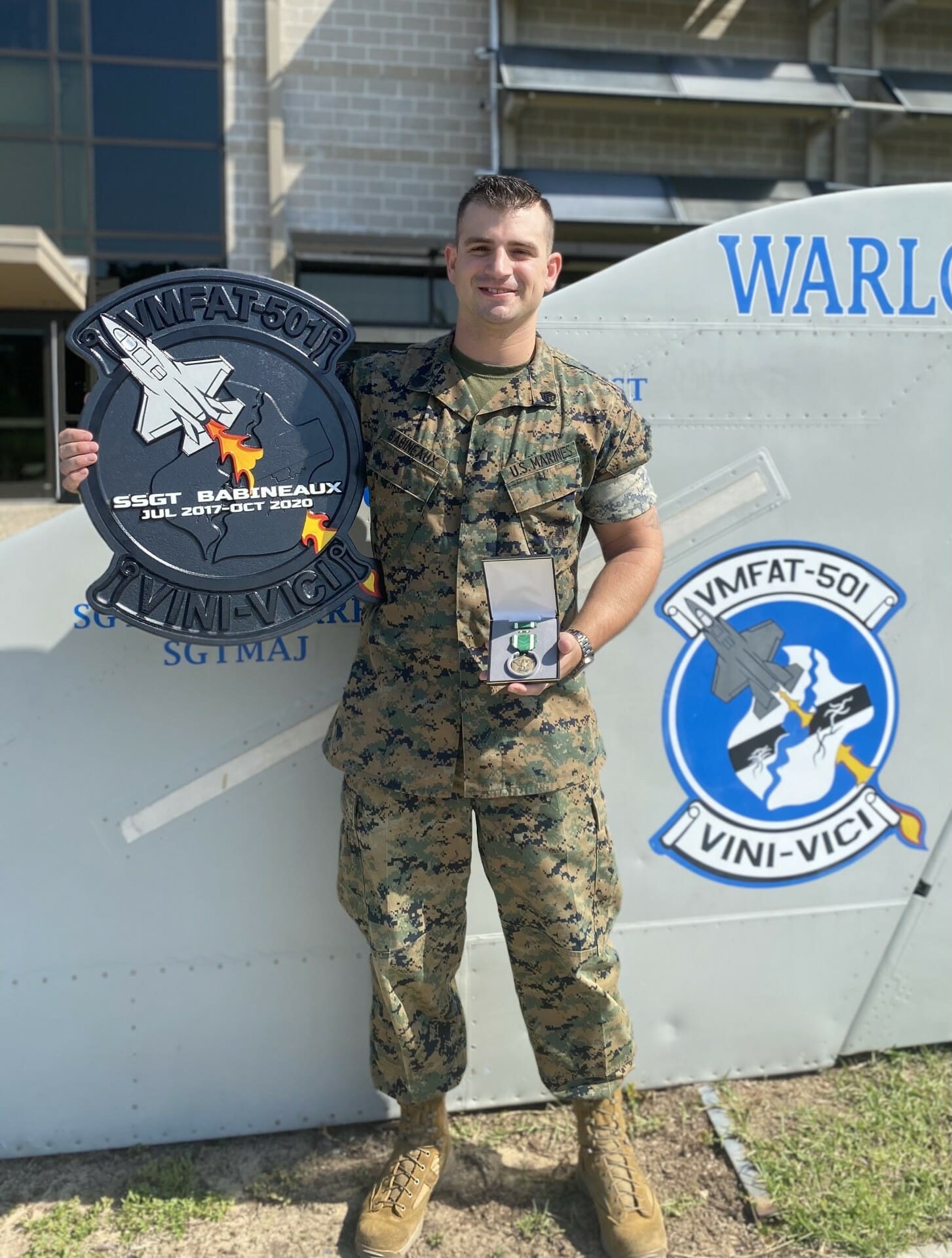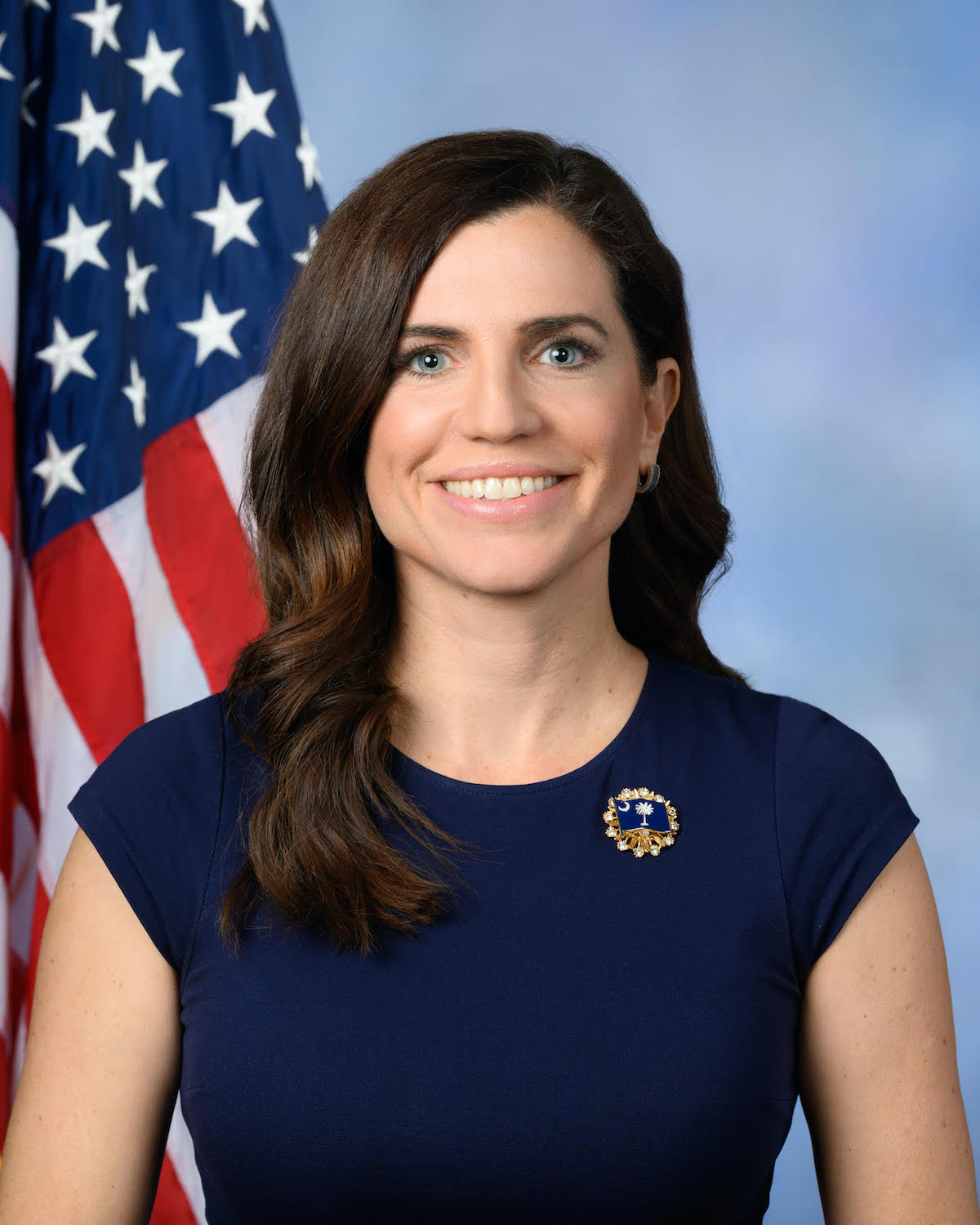By Sgt. Erin Morejon, USMC
MCAS Beaufort – When young men and women sign a 4 to 5-year active duty Marine Corps contract, they take an oath that ensures they understand the magnitude of their commitment. However, they may not realize that they’ll have to make another difficult decision when they near the end of their obligated service.
Many see it as a binary choice. On one hand, they can re-enlist and continue to enjoy esprit de corps, military benefits and the security of a government job. On the other, they can leave behind the structure and security of the Marine Corps for a civilian job that caters more to domestic comfort.
However, there is a third option. Marines can transition directly from active duty into the Marine Corps Reserve. They can retain many benefits of active service while gaining greater flexibility.
Staff Sgt. Andre Babineaux, the staff noncommissioned officer-in-charge of Reserve Component Marine Fighter Attack Squadron 501, made this decision in January, 2021. Babineaux currently works as a security training specialist for General Dynamics in Northern Virginia while supervising 20-30 flight equipment technician Marines at VMFAT-501 in Beaufort, South Carolina during periodic drill sessions, generally one weekend per month.
“I was active duty for over 10 years, but wanted to test the waters in the civilian world after getting my degree in aeronautics,” Babineaux said. “However, at my last unit, I got to work on the F-35 Lightning II, giving me a lot of valuable experience that I wanted to continue to build upon. While on active duty, I learned more about the MCR and the Direct Affiliation Program through Lt. Col. Howell, a Marine reserve pilot at VMFAT-501, and thought it could be a great opportunity.”
The DAP is a program that allows active duty Marines to sign up for an opening in a reserve unit six months prior to their end of active service. An added benefit of this program is that the Marine and their dependents will receive six months of free Tricare Prime after their transition date.
“The healthcare benefit was a major influence on my decision,” Babineaux said. “Even after that six-month period, reservists still qualify for Tricare Reserve Select and the Tricare Dental Program, which is still a really good deal.”
Serving in the Marine Corps Reserve also provides access to many other benefits for service members and their families. Some of these benefits include life insurance, employment assistance, access to a Veterans Affairs home loan, the ability to contribute toward a thrift savings plan, and progression toward a retirement plan.
“Having all of the benefits and resources that comes with serving in the reserve component takes a lot of guess work out of the mix for transitioning active duty Marines,” said Master Sgt. Vincent Sicilia, the operations chief with Prior Service Recruiting, 6th Marine Corps Recruiting District. “However, one of the main reasons that we see Marines come back to us is that they miss the brotherhood and being around other like-minded individuals. We can provide that for these Marines while giving them the flexibility to focus on family, life and a career outside of the Marine Corps.”
Marines who transition from active duty to the reserves are not required to sign another contract. If the Marine’s civilian life changes or their home unit receives mobilization orders, the Marine has the flexibility to exit the MCR at any time. However, as a reservist, they may volunteer for deployments, the Individual Mobilization Augmentee program or activation orders if opportunities arise.
“I wanted to continue to serve my country and grow my experience with working on the F-35, so I signed on for an IMA at my previous unit, VMFAT-501,” Babineaux said. “However, as long as I meet my yearly requirements, I am able to schedule my own drills, and I have the flexibility to get out at any time if I decide it’s not working for me.”
Throughout the United States there are more than 180 reserve training centers. Current or former active duty Marines looking to transition into the MCR may contact 6th Marine Corps District, Prior Service Recruiting to learn more about the available jobs at these locations.
“Advice that I would give to a Marine that isn’t entirely certain in their decision to end their military service is to not close the door all the way,” said Babineaux. “I would suggest to use the DAP program and become a part of the MCR at the very least, not only because of the benefits, but also because it is much easier to transfer back into active service if a Marine decides to do so. A Marine has everything to gain and nothing to lose when transferring from active duty to the MCR.”
Above: Staff Sgt. Andre Babineaux, a Marine with Marine Fighter Attack Training Squadron 501, is a prior active duty Marine who is now part of the Marine Corps Reserves. Babineaux now works a civilian job in Virginia, and supervises 20-30 flight equipment Marines in Beaufort during his periodic drill weekends. Photo by Sgt. Erin Morejon, USMC.







